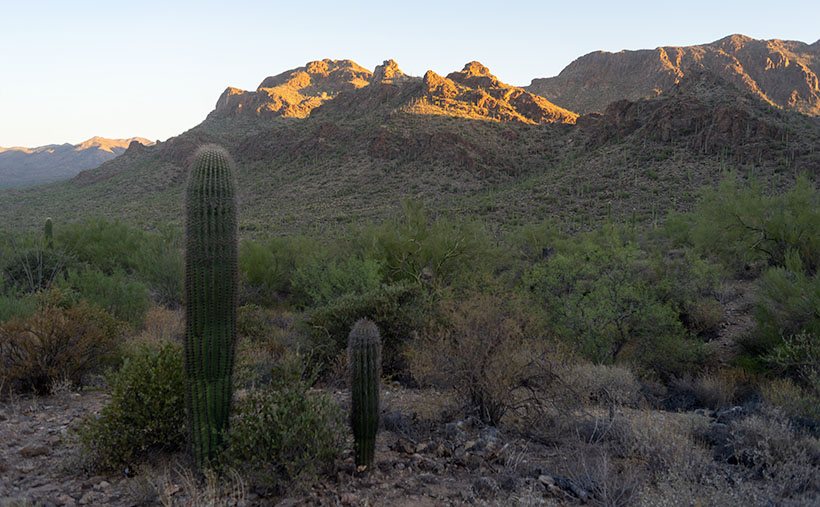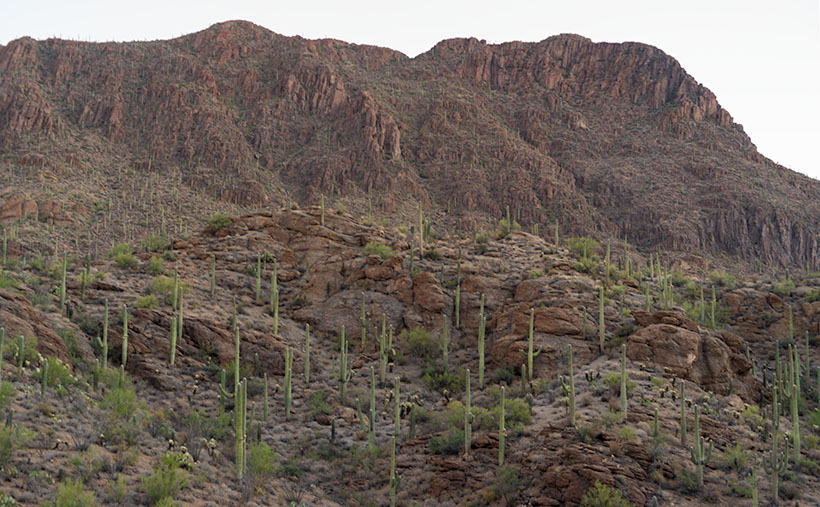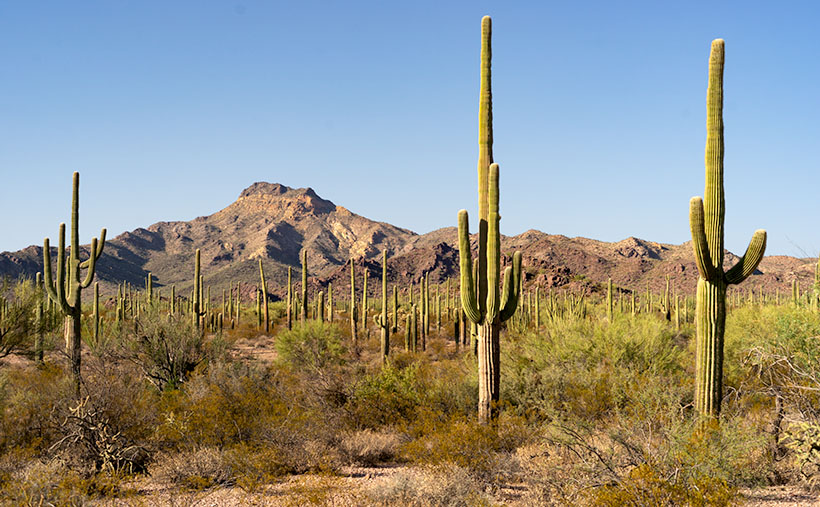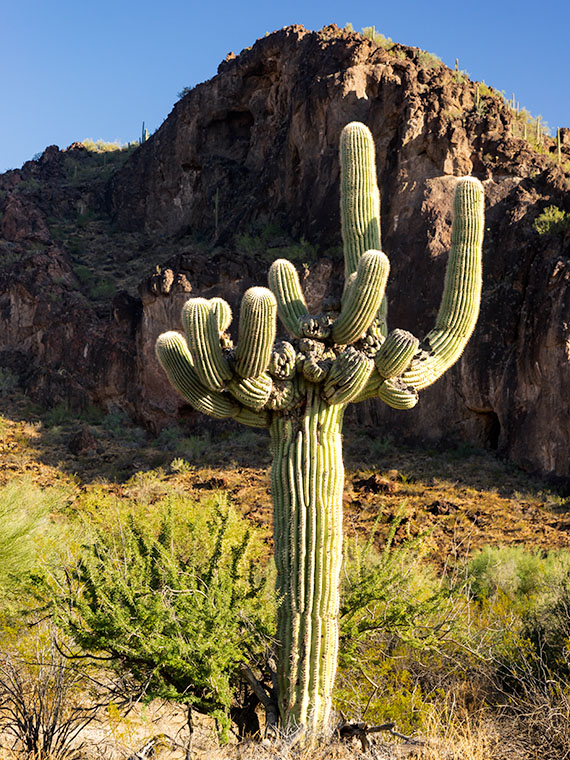When we visit national parks, Queen Anne and I like to spend time at the visitor’s center. We study the 3D display map and look through all the books. It gives us an idea of what to expect. Unfortunately, one of the regrettable effects that COVID 19 has brought is that the centers are closed. Even so, we stopped at the one in Saguaro National Park because they leave literature outside for crazy folks like us. That’s where the story of this week’s picture begins.
After picking up a map, I wandered the grounds looking for a shot of the mountains outback. I took several shots, but I knew they weren’t keepers. We got back in the truck, intending to explore the open roads, but we never left the parking lot. I spotted a possibility and immediately parked. As I hiked up the hill, I spotted a unique saguaro, and I forgot all about what I was after. Ooh, squirrel.
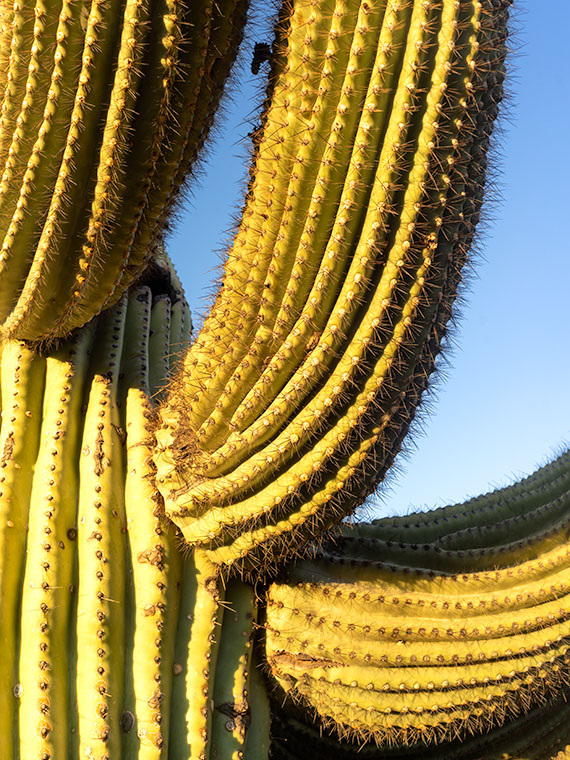
Like people, saguaros are all different. Young ones have no arms; some have one arm, others two or more. Someone could publish a book of saguaro portraits—it’s probably already done. The specimen that caught my eye had multiple arms, and they were pretty much at the same level. It reminded me of the Hindu goddess Durga—the woman seated with a gold headdress and many arms. As I approached the cactus, I noticed that it hadn’t been marred with woodpecker holes, so I spent some time trying to get a memorable photograph.
When I first reviewed this shot on my computer, I came up with a litany of Queen Anne jokes about shaving her legs. They involved ruined pantyhose, scratching posts, bear fur, velcro, and things along those lines. But, this morning, I thought better and decided not to go there. It’s better not to squander what little life I have left. I didn’t want to let the humor go to waste, though, so I titled this shot Arm Pits.
You can see a larger version of Arm Pits on its Web Page by clicking here. Next week, our day in Saguaro National Park turns to late afternoon, so be sure to come back and see what we found.
Until next time — jw

